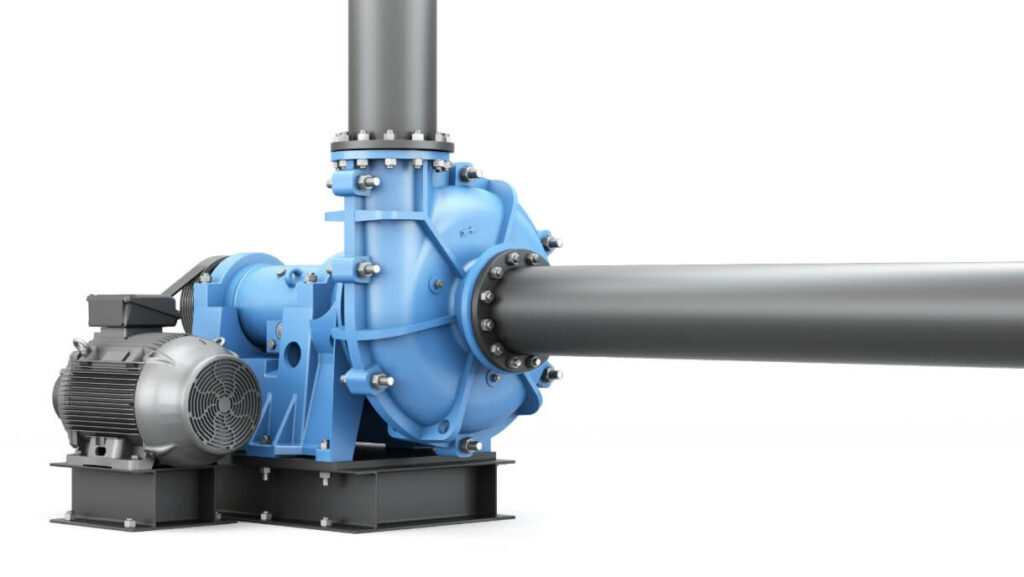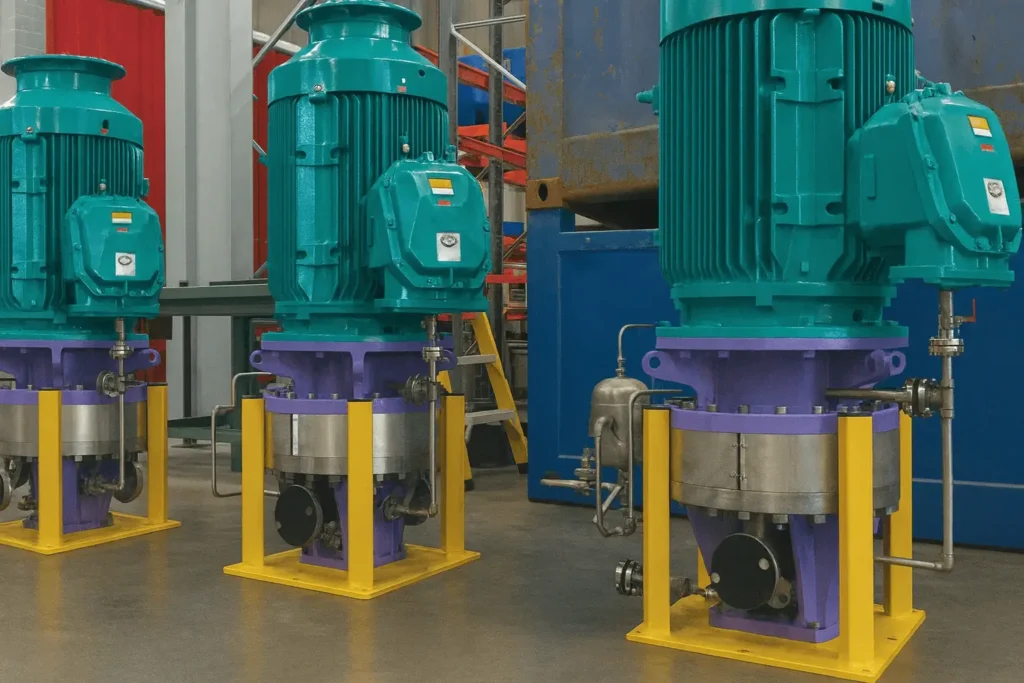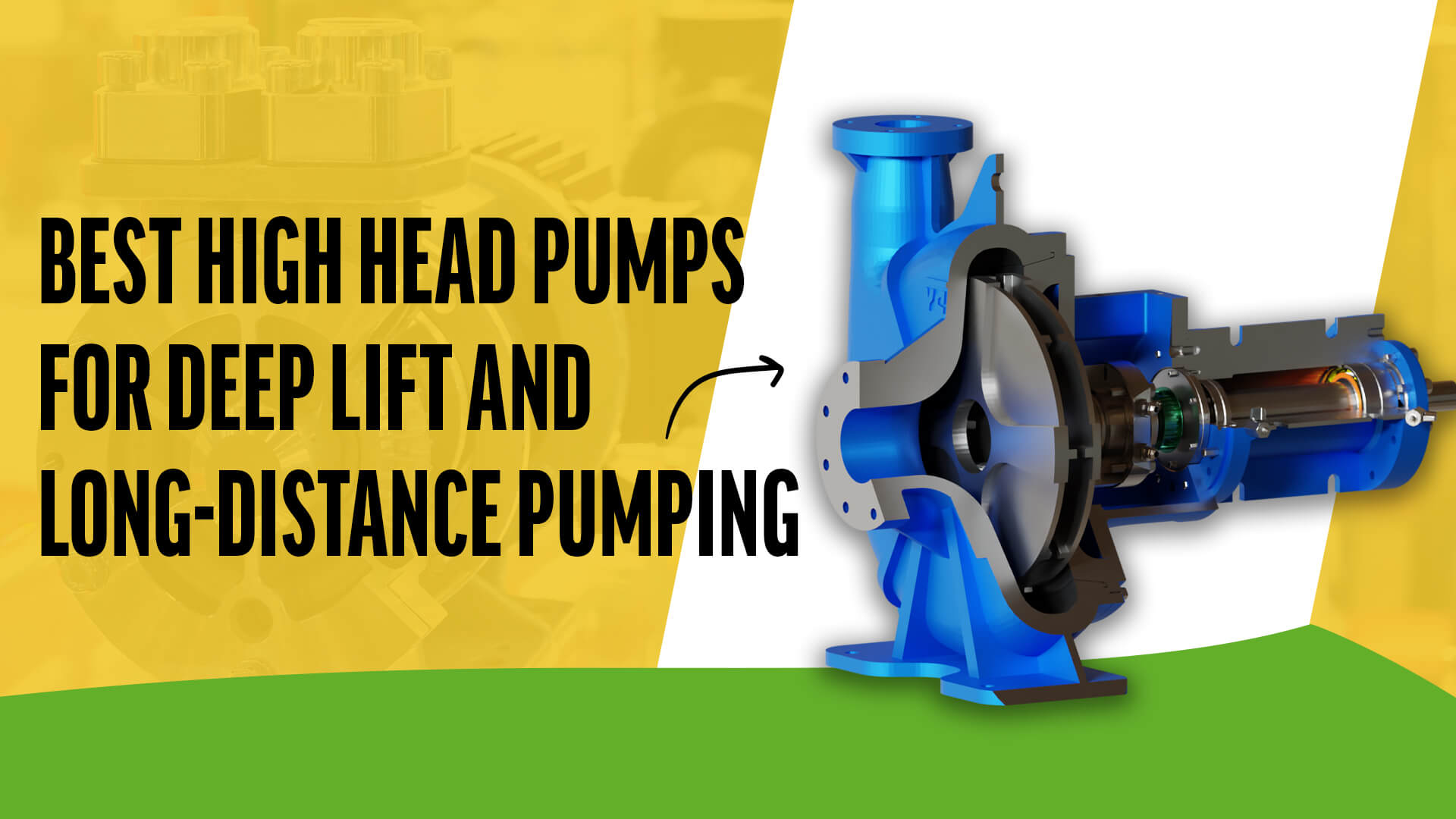Selecting the right high head pump is critical for applications requiring deep lift and long-distance pumping. Industries such as mining, oil and gas, and municipal water systems often encounter scenarios where fluids need to be moved over significant vertical distances or long horizontal stretches. These operations demand pumps that can handle high pressures without compromising on efficiency or reliability. A well-chosen high head water pump ensures that fluids are transported effectively, whether it’s slurry, water, or other materials, and that the operational goals are met with minimal downtime and optimal performance.
High head pumps are integral to a range of sectors that rely on consistent, high-pressure fluid transfer, particularly when facing challenges like large elevation changes or long distances. By understanding and selecting the right technology, companies can reduce operational costs, improve system efficiency, and achieve long-term savings.
Understanding High Head Pumps
What Makes a Pump Suitable for High Head Applications?
A high head pump is specifically designed to handle applications where the vertical distance that water must be lifted, referred to as “head”, is significant. The term “head” in pump technology refers to the height the pump can lift water, measured in feet or meters. For a pump to be classified as a high head pump, it must be able to generate high pressure and overcome substantial vertical lifts, making it ideal for use in demanding applications such as mining, oil and gas, and municipal water transfer.
High head pumps are engineered with robust impellers, powerful motors, and advanced materials to provide the energy required for deep lift and long-distance pumping. These pumps are typically used in scenarios where water or slurry needs to be pumped over long distances or to significant heights, such as in construction, mining, and dredging projects.
A high head water pump is crucial in many industries where pumping fluids to considerable heights, whether it’s for irrigation, dewatering, or water transfer, is required. The design of these pumps ensures maximum efficiency and reliability even under challenging conditions. These pumps often incorporate multiple stages of impellers, known as multistage centrifugal pumps, which progressively build pressure to lift water to its required height.
Why High Head is Important for Deep Lift and Long-Distance Applications
High head pumps play a pivotal role in applications requiring deep lift and long-distance fluid transfer. For industries like mining, oil and gas, and construction, the ability to move fluids over significant distances or lift them to considerable heights is essential to maintain operational efficiency.
In mining, high head dredge pumps are commonly used for transporting slurry from deep below the earth’s surface, where traditional pumps cannot operate effectively. These pumps need to be able to handle not only high pressures but also abrasive materials commonly found in mining slurry, ensuring minimal wear and maximum durability. A high head dredge pump is therefore an indispensable tool in ensuring effective sediment removal and maintaining operations in mining environments.
In oil and gas, high head water pumps are often used for transporting fluids over long distances or from deep reservoirs. The ability to sustain high pressure over long distances ensures that operations can continue smoothly without significant energy losses. This is particularly important in offshore drilling platforms or deep-water reservoirs where fluid transfer is a crucial part of the extraction process.
Municipal water systems also rely on high head pumps to supply clean water from reservoirs to homes or businesses located at varying elevations. The design of these pumps ensures that water reaches even the highest buildings or areas with minimal loss in pressure.
For all these applications, the selection of the appropriate high head pump ensures that energy is used efficiently, maintenance costs are reduced, and operations continue without disruption, providing a direct benefit to a project’s bottom line.
By understanding the importance of high head in these contexts, decision-makers can select pumps that will deliver maximum performance, minimize downtime, and ensure the long-term success of their projects.
Which Pump is Best for High Head?

High-Head Centrifugal Pumps
When it comes to high head pumping, high head centrifugal pumps are the most common and widely used option. These pumps are designed to handle applications where water or slurry needs to be moved against significant vertical resistance, making them ideal for industries such as mining, oil and gas, and construction. The primary advantage of a high-head pump in these applications is its ability to generate the necessary pressure to transport fluids efficiently over long distances or to higher elevations.
A high-head water pump utilizes a powerful motor and robust impeller design to achieve high-pressure outputs, overcoming the challenges posed by high lift demands. These pumps are capable of delivering high flow rates while maintaining pressure, making them perfect for use in environments with high vertical lifts or long-distance pumping requirements.
Multistage Centrifugal Pumps
For even greater performance, multistage centrifugal pumps are often the go-to choice for high head applications. Unlike single-stage centrifugal pumps, multistage pumps incorporate multiple impellers arranged in stages, each stage adding additional pressure to the fluid as it passes through. This design allows the pump to generate much higher pressures compared to standard pumps, making it ideal for high-head water pump applications.
The use of multiple impellers in a high-head dredge pump helps increase pressure incrementally, which is particularly useful for high lift and long-distance fluid transfer. These pumps are often selected for projects in mining and construction, where the fluid must be moved uphill or across long horizontal distances with minimal loss of pressure.
Example: Balwaan 2×2 Inch High Head Pump
An example of a high-head pump that excels in demanding environments is the Balwaan 2×2 Inch High-Head pump, which operates at 3600 RPM with a 7 HP engine. This pump is specifically designed to tackle the challenges presented by environments requiring both high flow rates and significant pressure generation. Whether in mining, oil and gas, or construction, the Balwaan pump can effectively lift water or slurry, providing a reliable solution for those working in rugged, high-elevation conditions.
Real-World Applications
In industries like mining, high head dredge pumps are commonly used to transport slurry from deep within mines to processing areas, often across long distances and uphill. These pumps are critical in ensuring efficient material handling and minimizing downtime during operations. In the oil and gas industry, high head water pumps are used to move fluids from deep underground reservoirs to the surface, overcoming the challenges of fluid transfer over long distances or up to high elevations. Additionally, in construction, high head pumps are frequently employed to handle water or slurry removal from excavation sites, ensuring that the site remains clear and operations can continue smoothly.
Which Pump is Suitable for Deep Well Pumping?

Submersible Pumps
For deep well applications, typically in depths ranging from 100 to 400 feet, submersible pumps are the preferred choice. These pumps are fully submerged within the well, ensuring direct contact with the fluid being pumped. The submerged design allows these pumps to effectively push water up from deep within the well, making them highly efficient for high-lift applications.
High-head submersible pumps are especially beneficial in environments where vertical lift and high flow rates are required. The ability to operate underwater helps reduce wear on the pump while maintaining consistent and reliable fluid movement. Whether it’s for municipal water supply, irrigation, or industrial processes, submersible pumps provide an energy-efficient solution for deep well applications.
Key Features of Submersible Pumps
- Energy Efficiency: Submersible pumps are designed to use less power to move water, making them an ideal choice for reducing operational costs in deep well pumping.
- Reliability: These pumps are built to operate continuously, offering long-term durability with minimal maintenance.
- Quiet Operation: Because the pump is submerged, noise is significantly reduced, which is an advantage in both residential and industrial applications.
Applications
Submersible high-head pumps are widely used in municipal water systems, where they can draw water from deep wells to supply large areas. In mining operations, high-head water pumps are essential for dewatering deep wells or boreholes, ensuring that excavation can proceed safely. Additionally, these pumps are frequently used in irrigation systems, where they help provide water from deep underground sources to the surface for agricultural use.
Jet Pumps for Shallower Depths
While submersible pumps are best suited for deep well pumping, jet pumps can also be an option for shallower depths, typically under 25 feet. However, for true deep lift, submersible high-head pumps outperform jet pumps due to their superior energy efficiency and reliable operation over greater depths.
Which Pump is Used for Long-Distance Pumping?
Multistage Centrifugal Pumps for Long-Distance Water Transfer
For long-distance pumping, multistage centrifugal pumps are the most reliable solution. These pumps are designed to move water or other fluids over extended distances, utilizing multiple impellers to increase pressure incrementally at each stage. The result is a high-head pump that can sustain high pressure over long pipelines, making it suitable for applications where fluid must be transported over significant distances, such as in large-scale irrigation systems, industrial water supply, and mining slurry transport.
A high-head water pump, like a multistage centrifugal pump, ensures that pressure losses are minimized, even over long distances, helping maintain an efficient flow rate. This is especially important in industries like mining, where fluids need to be moved across expansive sites or from remote locations. The ability to generate significant pressure across long distances makes high-head centrifugal pumps essential for large-scale projects.
Progressive Cavity Pumps
In addition to multistage centrifugal pumps, progressive cavity pumps are another excellent choice for long-distance pumping. These pumps are particularly effective for handling viscous, abrasive, or solids-laden fluids, such as mining slurry or wastewater. The unique design of progressive cavity pumps allows them to maintain high efficiency over long distances while minimizing wear, even when pumping challenging fluids.
Progressive cavity pumps are well-suited for high-head dredge pump applications where abrasive materials may cause damage to traditional centrifugal pumps. With their low-maintenance design and ability to handle high viscosities, progressive cavity pumps are ideal for long-distance fluid transport in mining and construction projects, as well as other industries requiring consistent and reliable fluid movement.
Applications
- Mining Slurry Transport: In mining, high-head dredge pumps and progressive cavity pumps are used to transport slurry over long distances. These pumps help move thick, abrasive materials from extraction sites to processing facilities, ensuring minimal downtime and optimal performance.
- Long-Distance Water Transfer in Agriculture: Multistage centrifugal pumps and progressive cavity pumps are crucial for agricultural irrigation systems, where water must be moved from distant reservoirs or rivers across vast farmland. The high head capabilities of these pumps ensure that water can reach every part of the field, regardless of the distance.
- Construction Projects: Long-distance pumping is often required in construction projects for dewatering and slurry removal. Both high-head water pumps and progressive cavity pumps ensure efficient fluid transfer, maintaining operations even in large, complex construction sites.
What is the Maximum Head Lift of a Pump?

Defining Max Head
The maximum head of a pump refers to the greatest vertical lift the pump can achieve. It is a crucial performance parameter that indicates the maximum height a pump can lift water from its source to the discharge point. A pump’s head is influenced by several factors, including its design, power, and impeller configuration. For high-head pumps, understanding the maximum head is essential to ensure they meet the required specifications for high-elevation applications or long-distance fluid transport.
Multistage Centrifugal Pumps: Ability to Reach Heads Up to 850 Meters
When it comes to achieving high lifts, multistage centrifugal pumps are unparalleled. These pumps are designed to reach heads up to 850 meters in specialized industrial and municipal applications. The multistage design, with several impellers working in tandem, allows for the gradual buildup of pressure, which is critical for achieving the necessary height or distance in demanding pumping environments.
For instance, a high-head dredge pump used in mining operations or for deep well dewatering may need to achieve high heads to move slurry from deep underground or over challenging terrain. With the right configuration, multistage centrifugal pumps are capable of delivering reliable performance even in extreme conditions.
Pump Performance Curves
To understand the true performance potential of a pump, it’s essential to consult its performance curve. This curve illustrates the relationship between head and flow rate, helping to determine the pump’s efficiency at different operating points. The max head point on the curve represents the highest possible lift that the pump can achieve, beyond which the flow rate will decrease significantly.
It’s crucial to operate the high-head water pump within the optimal range of its performance curve, as this ensures the best balance between flow and head while minimizing energy consumption. By understanding these curves and consulting with manufacturers, you can make informed decisions on selecting the right high-head pump for your specific application.
Key Considerations When Choosing High-Head Pumps

Energy Efficiency
One of the most important factors when selecting a high-head pump is energy efficiency. Pumps are often one of the largest energy consumers in industrial processes, and choosing a high-head water pump that minimizes energy consumption can significantly reduce operational costs. For projects requiring high head or long-distance fluid transfer, ensuring that the pump operates efficiently over time will provide long-term savings and improve the overall sustainability of the operation.
Energy-efficient high-head pumps help reduce the costs associated with power usage, especially in applications that run continuously or for extended periods. For instance, a high-head dredge pump used in mining or dewatering operations can be expensive to run if it consumes excessive energy. Selecting a pump that offers the right balance of power and efficiency can ensure that energy costs are kept in check while still achieving optimal performance.
Maintenance Requirements
Maintenance is another critical consideration when choosing a high-head pump. Pumps that require frequent or complex maintenance can increase downtime and operational costs. Therefore, understanding the maintenance requirements of different pump types is essential in ensuring smooth, uninterrupted operations.
- Submersible Pumps: High-head submersible pumps are often chosen for deep well applications due to their minimal maintenance needs. These pumps operate underwater, which helps protect them from wear and tear caused by external elements. With fewer moving parts exposed to harsh environments, high-headwater pumps of this type typically require less frequent servicing, making them a cost-effective choice in long-term operations.
- Multistage Centrifugal Pumps: In contrast, multistage centrifugal pumps used for high head and long-distance applications generally involve more complex maintenance due to their intricate impeller systems. While they are highly effective for achieving high heads and pressure, these pumps require regular checks on the impellers, seals, and motors to ensure continued performance. For applications where reliability is key, opting for a hhigh-headdredge pump with a well-established maintenance schedule will be essential to minimize potential failures and downtime.
Pump Sizing and Design
Correct pump sizing and design are critical to optimizing the performance of a high-head pump. A pump that is too small may fail to generate the required pressure, leading to inadequate fluid transfer, while a pump that is too large may waste energy and lead to over-pumping. Properly sizing a high-head water pump ensures that the pump operates within its optimal performance range, providing the necessary flow and head without unnecessary energy consumption or excessive wear.
In addition to sizing, the design of the high-head dredge pump should match the specific application. For instance, selecting a pump designed for slurry transport in mining requires specific considerations, such as abrasion resistance and the ability to handle solids. A poorly designed pump will not only fail to meet the required operational performance but could also incur higher maintenance costs over time.
By selecting the right high-head pump with the proper design and size, you can ensure that your project runs efficiently and effectively, reducing downtime and maximizing productivity. Always consult with manufacturers and pump specialists to ensure the specifications meet the demands of your operation.
Conclusion
Choosing the right high-head pump is essential for successful deep lift and long-distance fluid transfer. For applications requiring high pressure, multistage centrifugal pumps and high-head dredge pumps are ideal, offering excellent performance over long distances and in challenging conditions. For deep well pumping, submersible pumps offer energy-efficient, reliable solutions. Additionally, progressive cavity pumps are well-suited for long-distance transport of viscous or abrasive fluids, ensuring minimal wear and high efficiency.
To ensure optimal performance and cost-efficiency, it’s crucial to select a high-head water pump that aligns with your specific project requirements. Whether for mining, construction, or municipal water transfer, choosing the correct pump technology based on fluid type, lift height, and distance will provide long-term reliability, reduce maintenance, and maximize ROI.Need expert advice? Contact Plus Pumps today for tailored pump solutions that meet your project’s unique needs.



